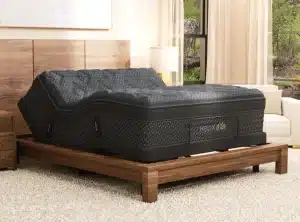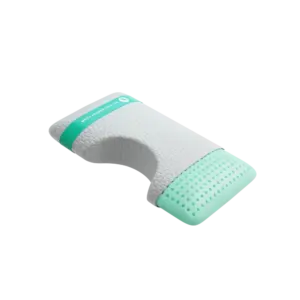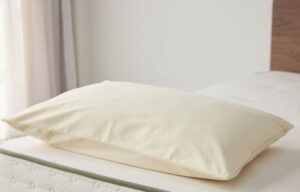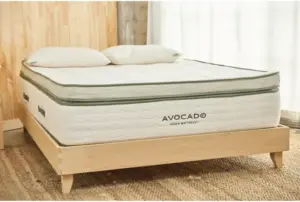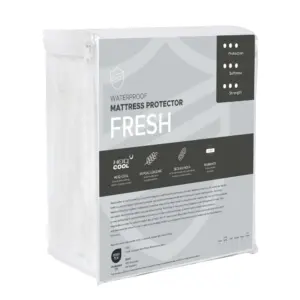What to Put Under Your Mattress on the Floor for Optimal Comfort
Why a Bed on the Floor is a Great Idea
Setting your mattress directly on the floor can be more than just a budget-friendly choice. This minimalist approach not only enhances the aesthetic of your bedroom but also provides a reliable support system, potentially improving your quality of sleep.
Key Advantages:
1. Cost-Saving: Forego the expense of a bed frame or box spring.
2. Minimalist Aesthetic: Achieve a sleek, uncluttered look.
3. Sturdy Foundation: Enjoy firm support that may alleviate back pain.
I’m Ben Trapskin, the creator of Yawnder. After navigating the labyrinth of mattress shopping and sleep enhancement, I’ve come to appreciate the myriad benefits of placing a mattress on the floor.
Benefits of Putting Your Mattress on the Floor
Opting for a mattress-on-the-floor setup comes with several notable advantages:
Cost-Saving
One of the most attractive reasons to place your mattress on the floor is the financial relief it offers. By skipping the bed frame or box spring, you can significantly cut down on expenses. This approach allows you to invest directly in your mattress, which can be especially beneficial for those on a limited budget.
Minimalist Aesthetic
A floor bed significantly contributes to a clean and streamlined look that appeals to minimalists. Without the bulk of a traditional bed frame, your room can appear more spacious and inviting. This can be especially advantageous in smaller apartments or bedrooms.
Solid Foundation
When placed directly on the floor, your mattress gains a level of integrity that slats or metal frames can’t provide. The uniform support from the floor ensures your mattress remains stable, which can enhance its longevity by maintaining its structure.
Back Pain Relief
For many, a firmer sleeping surface can reduce discomfort associated with back pain. The direct support from the floor aids spinal alignment, which may help alleviate pressure points. By positioning your mattress this way, you can foster better posture and improve blood circulation while you sleep.
Understanding these advantages is crucial to deciding whether a mattress-on-the-floor setup fits your lifestyle and needs. However, it’s equally important to consider the prospective drawbacks.
Drawbacks of Putting Your Mattress on the Floor
While placing your mattress on the floor has its merits, there are several issues to take into account:
Restricted Airflow
A mattress resting directly on the floor suffers from limited airflow, which can foster higher humidity levels. This increase in moisture heightens the risk of mold and mildew growth, leading to potential health issues. Symptoms can range from mild allergies to more severe health concerns.
Insect Risks
Having your mattress on the floor raises the likelihood of pest issues. Common household pests, such as ants and dust mites, can easily find their way onto your mattress, posing a discomfort that may be exacerbated in densely populated areas where infestations are common.
Dust Accumulation
With the mattress in direct contact with the floor, it becomes prone to collecting dust and debris. For those who suffer from allergies, this can lead to severe reactions, including sneezing and congestion.
Mobility Issues
For older adults or people with mobility concerns, getting in and out of a bed on the floor can be cumbersome. The low height can strain knees and backs, making daily use less convenient.
Warranty Concerns
Many mattress warranties stipulate that mattresses must be used with a proper foundation or bed frame; otherwise, you risk voiding your warranty. It is always wise to consult warranty guidelines before deciding on a mattress floor setup.
By weighing these drawbacks against the benefits, you can better assess whether putting your mattress on the floor is right for you.
What to Put Under Your Mattress on the Floor for Optimal Comfort
If you’re committed to placing your mattress on the floor, incorporating protective materials can enhance both comfort and longevity.
Foam Mats
Foam mats are a fantastic option for insulation and comfort. They serve as a soft barrier between your mattress and the floor, providing a more comfortable sleeping surface. Foam mats are also highly portable and easy to clean.
Cardboard
If you’re looking for an economical choice, cardboard can be an effective barrier to shield your mattress from dirt and dust. Although it doesn’t provide as much comfort as foam, it does create insulation while helping to keep your mattress clean.
Non-Slip Rubber Mats
These add stability while preventing your mattress from shifting. Non-slip rubber mats provide a small cushion and are durable, making them a solid long-term investment.
Wooden Slats
For those prioritizing airflow and support, wooden slats can elevate your mattress just enough to facilitate better ventilation beneath. This can help mitigate the dangers of mold and mildew, especially in humid climates.
Tatami Mats
For a culturally inspired aesthetic, consider tatami mats. Made from natural materials like rice straw, tatami mats create a firm, comfortable sleeping surface. They also offer great insulation and visual charm.
Using one or more of these materials can significantly improve not only comfort but also hygiene when placing your mattress on the floor.
How to Protect Your Mattress on the Floor
Maintaining your mattress is vital to ensure a comfortable and healthy sleeping environment. Here are some practical ways to keep your mattress in top shape:
Air It Out Regularly
To combat moisture buildup, regularly airing out your mattress is essential. Simply lifting it on occasion allows air to circulate, which helps prevent mold growth.
Tip: Aim to do this once a week for a few hours to keep your mattress fresh.
Use a Mattress Protector
Investing in a high-quality mattress protector can shield your mattress from sweat, dirt, and allergens, which is particularly important for mattresses on the floor.
Benefits of a Mattress Protector:
– Dust Protection: Keeps allergens at bay.
– Cleanliness: Guards against spills and oils.
– Extended Lifespan: Reduces wear over time.
Many mattress protectors are machine washable, simplifying the maintenance process.
Clean Beneath Your Mattress
Regular cleaning underneath your mattress can help prevent pests and allergens from taking root.
Cleaning Steps:
1. Vacuum: Eliminate dust and debris quickly.
2. Sweep: If you don’t have a vacuum, a good sweep will suffice.
3. Disinfect: Use a mild cleaner and ensure the area is dry before replacing the mattress.
By keeping your mattress and the surrounding area clean, you contribute to a healthier sleep environment.
Alternatives to Putting Your Mattress on the Floor
If the drawbacks of a floor bed resonate with you, consider these alternatives:
Platform Beds
These low-profile beds retain the minimalist appeal but offer better ventilation and support. They are available in various designs and often include features like built-in storage, making them functional as well as stylish.
Inexpensive Bed Frames
If cost is a concern, explore budget-friendly bed frames starting at around $100. These frames can provide crucial mattress support while improving airflow and minimizing dust exposure.
Box Springs
Adding a box spring can elevate your mattress, making it easier to get in and out of bed. They also enhance ventilation, keeping your mattress more comfortable and hygienic.
Choosing any of these alternatives can provide many of the advantages of a floor bed while alleviating common concerns such as dust accumulation and pest exposure.
Frequently Asked Questions About a Bed on the Floor
Is it okay to have your bed on the floor?
Yes, but be mindful of airflow and safety risks, particularly for those with mobility issues.
Are floor beds better for adults?
They can suit adults seeking minimalism, but side sleepers and those with mobility issues may find them uncomfortable.
What is a bed on the floor called?
It may be referred to as a platform bed, roll-up bed, or pallet bed, each with unique features and cultural significance.
Conclusion
At Yawnder, we believe everyone deserves an optimal sleep solution tailored to their individual needs. Whether you choose the minimalist appeal of a bed on the floor or prefer a more traditional setup, our goal is to guide you in making informed choices.
By understanding the pros and cons and implementing best practices for mattress maintenance, you can cultivate a sleeping environment that promotes health and overall well-being. For expert advice and top-rated mattress selections, explore our Yawnder collection today. We’re here to help you achieve the restful nights you deserve.



